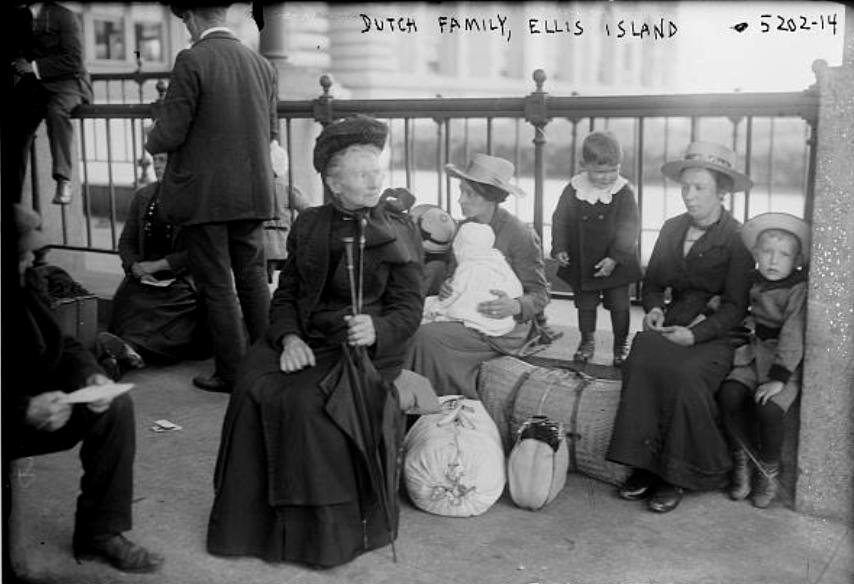
Fifure 1.--Here we see a Dutch immigrant family at Ellis Island, probably about 1905. The Dutch were an umportant part of the populatio of early colonial America (17th century), but afer te Engkish seized New Anstrrdam, emigratiion fll off. |

|
Dutch emigration ended to American largely ended when Britain seized New Amsterdam (1664). It increased for short time after the Napoleonic War when King William I became king (1813). William began promoting industry and putting constraints on the country' religious freedom. In addition, high taxes and low wages, caused some farmers to emigrate to America. They mainly settled down in the upper Midwest. There was also immigrants desiring more religious freedom. Catholic emigrants promoted by Father Theodore J. van den Broek from the southern Netherlands (1840s).
Economic stagnation was a factor (1840s). King William abdicated (1839). Gradually religious oppression abated and the Netherlands resumed its policies of religious tolerance. Some Dutch came to America in the first half of the 19th century. Of course statistical date during this period is not as relaiable va during the second half of the century. , but fewer in the second half when the really large waves of other Europeans came to America. In general, the drivers for emigration in Europe were not as significant in the Netherlands and in many other countries, namely religious repression, militarization, and economic constraints were less notable. In addition, the Dutch Empire--mainly the Dutch East Indies provided opportunities for people that otherwise might have considered emigrating. The Netherlands was a small country to begin with, but when a a limited number of people in a small country choose to emigrate there is an unusually small number of immigrants from the Netherlands. There was a spike in Dutch immigration after World War II, because of the serious economic conditions after the War as well as the loss of the Dutch East Indies, the major Dutch colony.
Navigate the Boys' Historical Clothing Web Site:
[Return to the Main national origins page]
[Return to the Main national origins page]
[Return to the Main U.S. immigration page]
[Return to the Main Dutch page]
[About Us]
[Introduction]
[Biographies]
[Chronology]
[Clothing]
[Disease and Health]
[Economics]
[Environmental issues]
[Feminism]
[Geography]
[History]
[Human Nature]
[Law]
[Nationalism]
[Presidents]
[Religion]
[Royalty]
[Science]
[Social Class]
[Bibliographies]
[Contributions]
[FAQs]
[Glossaries]
[Images]
[Index]
[Links]
[Registration]
[Search]
[Tools]
[Children in History Home]
